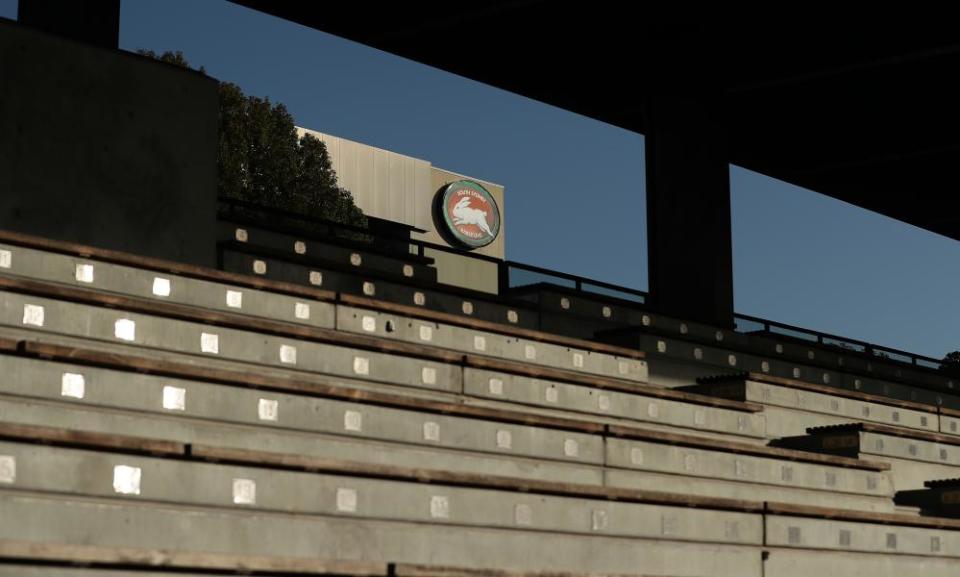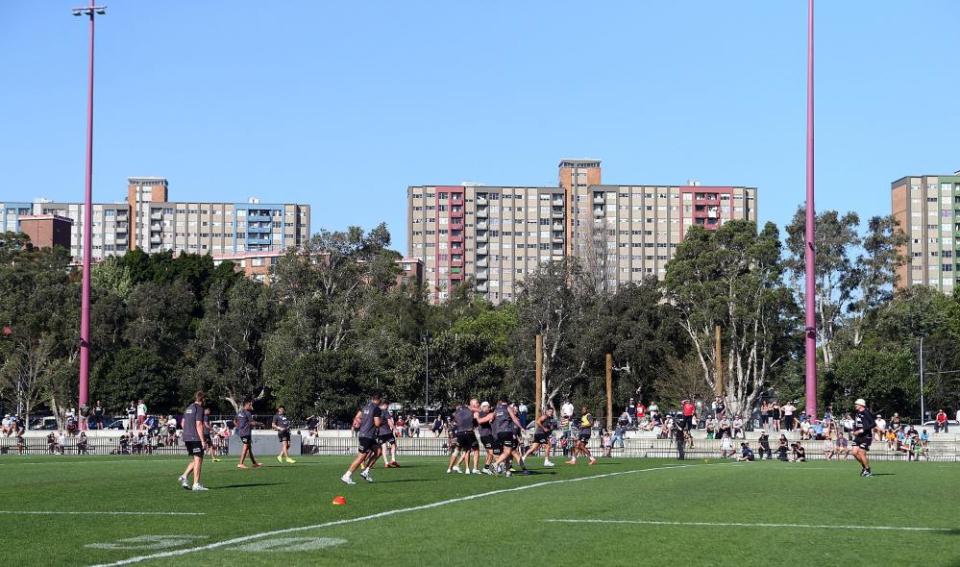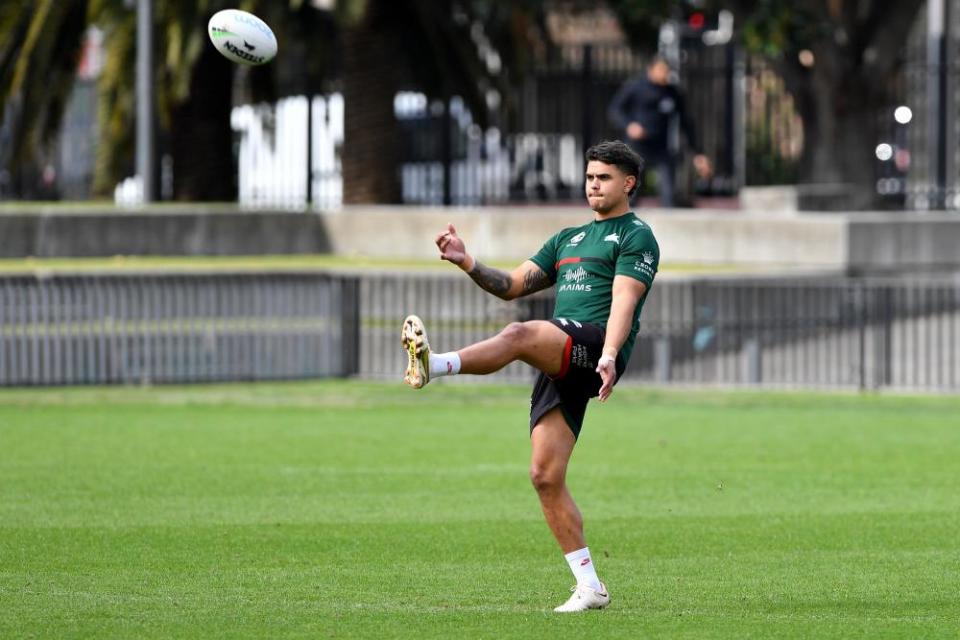
Every football club has a home ground. At Redfern Oval, spiritual home to the South Sydney Rabbitohs until this week, old timers called theirs “The Holy Land”. It was more than a place where rugby league was played, it was the community’s heartland, a playground for kids, a nursery for local talent, a theatre of dreams and a sanctuary for anyone who wanted to believe in, and belong to, something bigger.
So when the time came to move the 115-year-old club’s most precious artefacts into a new headquarters, the club decided to carry its history with them – literally. Players and coaches met at Redfern Oval at dawn. At the club’s offices over the road, they unscrewed old team photos and honour rolls from walls and gently laid them in boxes. Then, with the precious cargo on their shoulders, they began a 26km overnight pilgrimage from The Holy Lands, visiting sacred sites on the way.
They stopped at Mascot Oval where captain Cameron Murray and forward Keaon Koloamatangi played as young Jets. They went via Erskineville Oval where former captain Adam Reynolds started his career as an Alexandria Rover, and Yarra Oval where La Perouse Panther Alex Johnston began the journey that would make him the club’s greatest try scorer. At Marcellin Fields, champion centre and Coogee Wombat Campbell Graham paused to reflect on where it all began. Along the way, club leaders and community elders related stories of the people and the past.
Twenty-seven hours after they left the Holy Land, the Rabbitohs’ arrived at the Promised Land: Heffron Park in Maroubra – a $58m centre of excellence seven years in the making. Here, the club’s NRL, Women’s and NSW Cup teams can convene, uniting the club’s administrative and commercial arms, and doubling the reach of its community programs to help health and employment for local kids.
It’s an impressive powerbase but Redfern is still home. Indeed, the Rabbitohs will return to the Oval on 21 April to scatter the ashes of favourite son John Sattler. But like all home grounds, Redfern Oval was someone else’s holy lands first. Gadigal warriors stalked its swamps and tea-tree forests first to hunt kangaroo and possum. To early Europeans, the area was a “dangerous pestiferous bog” called Boxley’s Lagoon until 1880 when the 12 acres between Elizabeth, Redfern, Chalmers and Phillip streets known as Nathan’s Cow Paddock was renamed Redfern Oval.

At first it was a pleasure ground of flower gardens, bowling greens and bandstands. As the land around it evolved from farms and dairies into mills and factories, sport as the opiate of the Sydney masses saw Redfern Oval become a sporting arena. Victor Trumper put it on the map in 1903 when he hit a ball out of the ground and through the second-floor window of the boot factory over the road. Five years later, on 17 January, 1908, Trumper convened a meeting close by at Redfern Town Hall where the South Sydney District Rugby League Football Club was formed.
Yet it was not until 1948, when the club had won 11 premierships, that Redfern Oval became Souths’ official home and a mecca for the golden age that followed – five premierships in seven years, the 1955 title coming after a streak of 11 must-win games capped by Clive Churchill, broken wrist splinted with cardboard and sticks, kicking a goal from the Redfern touchline to secure a miracle grand final berth.
Related: John Sattler: South Sydney rugby league great dies aged 80
The club’s next great generation, in the mid-1960s, were reared on such stories in the mean streets around the Oval. Ron Coote, George Piggins and Bob McCarthy were locals and, with captain Sattler and Indigenous goalkicker Eric Simms, made it a mission to jog the Redfern boroughs and hang their cardinal and myrtle strips on clothes lines out back so the next generation saw the colours and aspired to wear them. It worked. From 1965 to 71, five premierships came back to Redfern.

Even in the dark years that followed, when the old ground was run down and rat infested, the Oval remained as woven into the streets as the rabbit into the jersey. Club mascot Reggie Rabbit, aka Reg Fridd, actually lived under the grandstand and local urchins, including former captain Craig Coleman and future owner Russell Crowe, spoke of blind eyes being turned to kids crawling under the wire to train with players and attend games they couldn’t afford. When they ripped up the old wooden seats, Piggins salvaged them to fence a new fortress around his own home.
At the club’s zenith, exiled from the competition by corporate forces in 1999, Redfern was where the fightback began. From a round table in the old clubhouse, future prime minister and Rabbitohs fan Anthony Albanese could look upon a site where footy legends had been born and but also where his fight for an Indigenous voice had begun, with PM Paul Keating’s defining Redfern speech there in 1992. From Redfern came return (readmission to the NRL in 2002) and, after 43 years, revenge (a 21st premiership in 2014). Is recognition next? Albanese need only invoke Redfern to know a Promised Land awaits those who carry the past on their back.
Article courtesy of
Source link